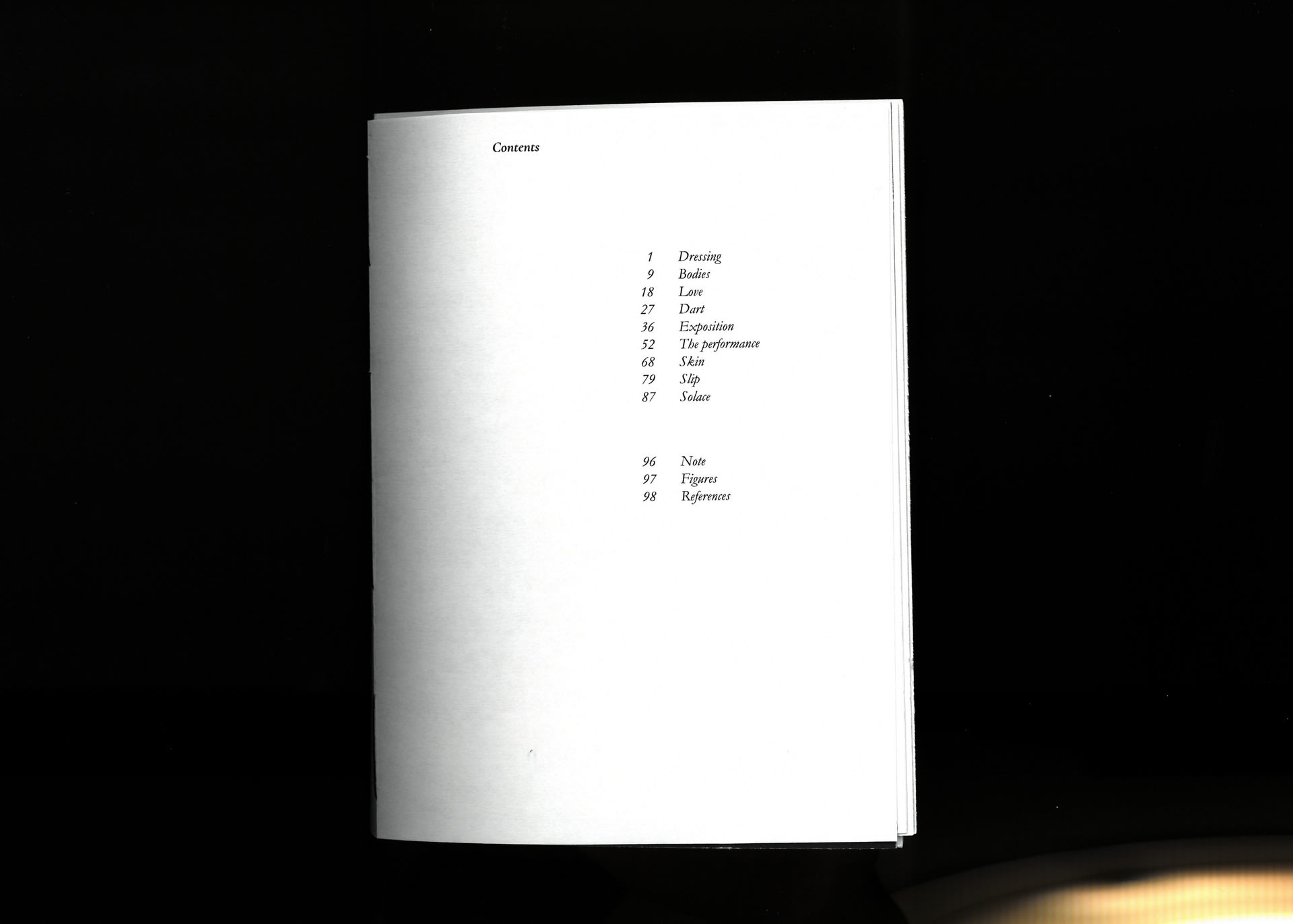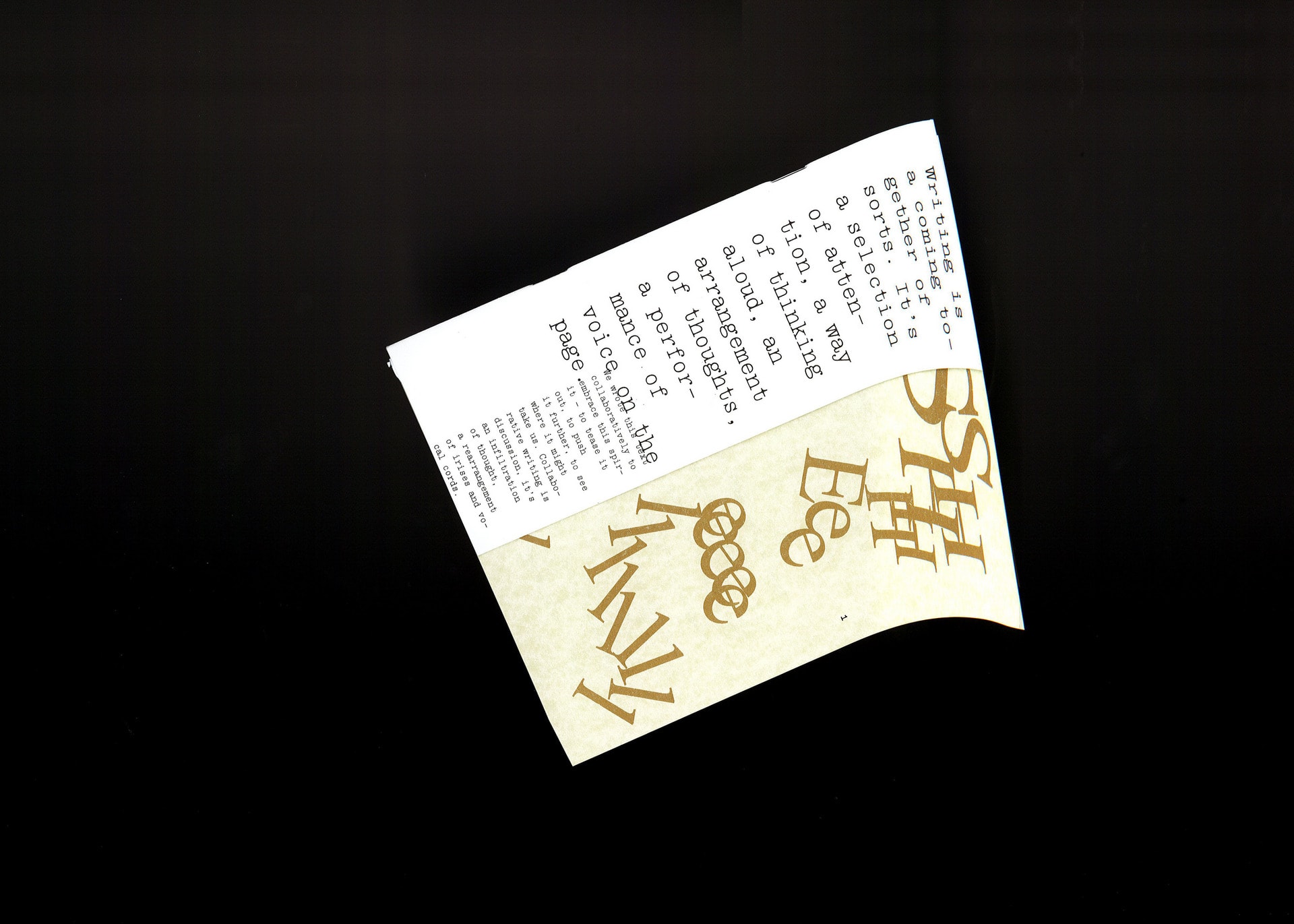SLIPS (2023) was written to mark the end of my MA in Writing. Though, I will tell you, perhaps more accurately, that it was not written to conclude so much as to begin examining in closer detail the many years I have spent considering the garments we dress our bodies in. The portion of these thoughts that have been written down over the past year question how the state of the emotional mind can influence what we wear, and how what we wear too influences that mind. Using the body as an anchor, I write through memory and emotion to examine how textiles and creative practice can impact the relationship we have to ourselves and our bodies. This work is structured through nine parts made up of ramblings, reflections, distractions, obsessions.
SLIPS is a project about writing, clothing, love and bodies. In a series of vignettes, I move between seasons and places to examine how clothing operates around our ever-changing bodies, selves and environments, and how, consequently, garments become vitally tangible, intimate evidence of how we relate to the world.
Informed by women artists, writers and seminal texts on women’s experience in clothes, I try to make sense of the dichotomous experience of women’s dress, questioning the supposed triviality that often comes with having a serious interest in clothes. I write through bodies and bodies of work, interlacing literature, art, memory, conversation and sensation. Fragments are gathered, knotted, unravelled, woven and positioned in relation to each other to embody the interconnected threads of a textile garment. Each reflects and examines the ambiguities, temporalities, privacies and expositions of the clothed body and the self that sits within it.
Material shapes and reshapes us, just as we shape it. In attending closely to the temporal, emotional and sensorial connective tissue bound into fabric, SLIPS advocates for a slower, more sustainable approach to dress and to our bodies. SLIPS is a lifelong obsession with clothes, told through love, loss and solitude. It is a story of dressing and undressing. A story of dressing to escape, to renegotiate, to return to the self. SLIPS is healing through writing and dressing, and an essential meditation on both as mediums for discovery, reflection and repair.
///
I write in the sea between two lands. The body of water, made of both and neither, dictates the shape and communication of the two. My raw material is the composition of that water: salt, minerals, scaly silver shadows that will tell the story, giving and obscuring through glimpses of patterns of movement: that is, all that accumulates in and around the writer; every book, object, conversation, memory; every searching thought, every scrawled note, every dress and every body: those that construct the patterns of the mind are held on the page, visible or not. Writing is a comma, it is marking time, setting pace, a gathering, a hold, a pause, a pivot. It is everyone who will read the book but has not yet. It is everyone who feels and thinks with their bodies as the author does now. It is the chaos that, through writing is collected, housed, choreographed and whittled down until each passage has purpose and each word a knife edge. Slowly the shape of things emerge.

























